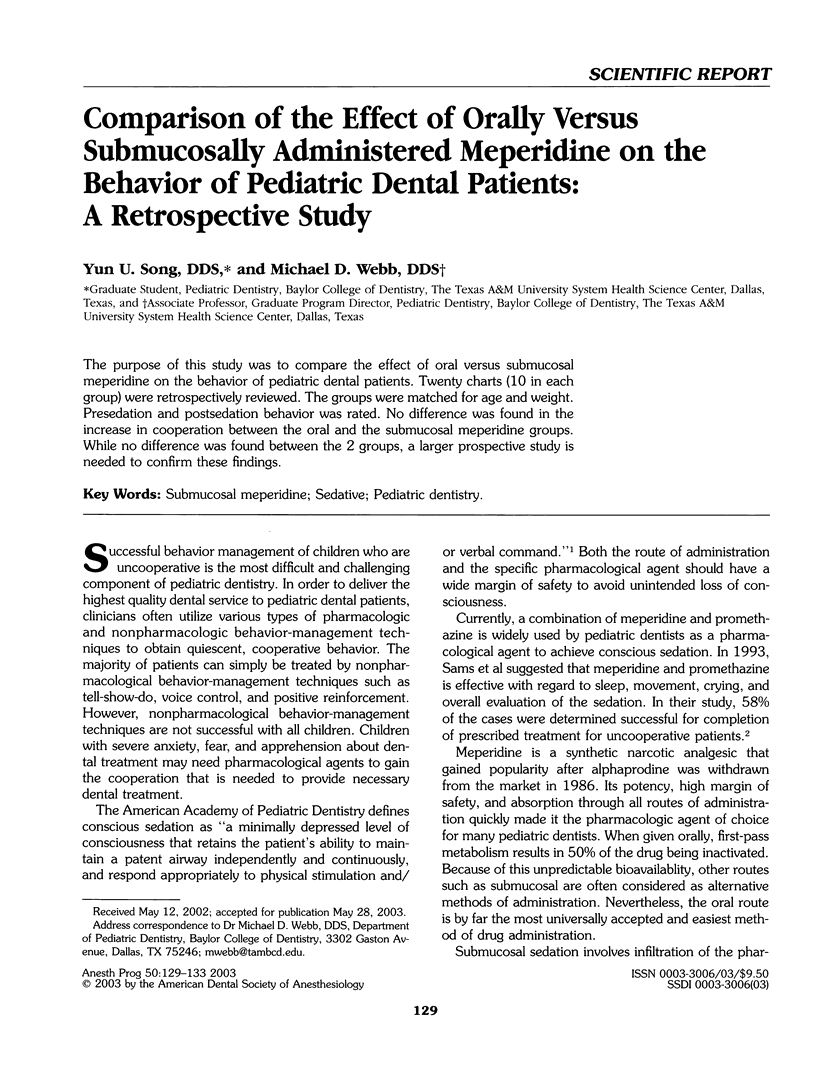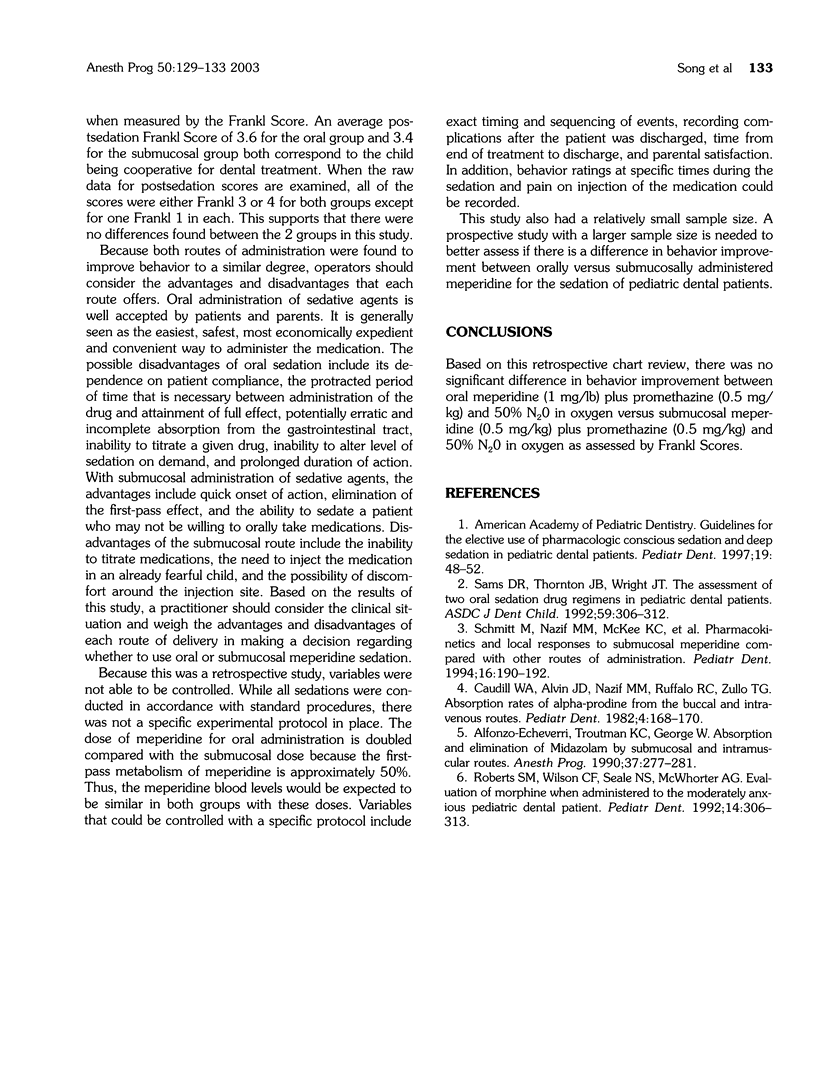Abstract
The purpose of this study was to compare the effect of oral versus submucosal meperidine on the behavior of pediatric dental patients. Twenty charts (10 in each group) were retrospectively reviewed. The groups were matched for age and weight. Presedation and postsedation behavior was rated. No difference was found in the increase in cooperation between the oral and the submucosal meperidine groups. While no difference was found between the 2 groups, a larger prospective study is needed to confirm these findings.
Full text
PDF




Selected References
These references are in PubMed. This may not be the complete list of references from this article.
- Alfonzo-Echeverri E., Troutman K. C., George W. Absorption and elimination of midazolam by submucosal and intramuscular routes. Anesth Prog. 1990 Nov-Dec;37(6):277–281. [PMC free article] [PubMed] [Google Scholar]
- Roberts S. M., Wilson C. F., Seale N. S., McWhorter A. G. Evaluation of morphine as compared to meperidine when administered to the moderately anxious pediatric dental patient. Pediatr Dent. 1992 Sep-Oct;14(5):306–313. [PubMed] [Google Scholar]
- Sams D. R., Thornton J. B., Wright J. T. The assessment of two oral sedation drug regimens in pediatric dental patients. ASDC J Dent Child. 1992 Jul-Aug;59(4):306–312. [PubMed] [Google Scholar]
- Schmitt M., Nazif M. M., McKee K. C., Zullo T., Venkataramanan R., Burckart G., Habucky K. Pharmacokinetics and local responses to submucosal meperidine compared with other routes of administration. Pediatr Dent. 1994 May-Jun;16(3):190–192. [PubMed] [Google Scholar]


